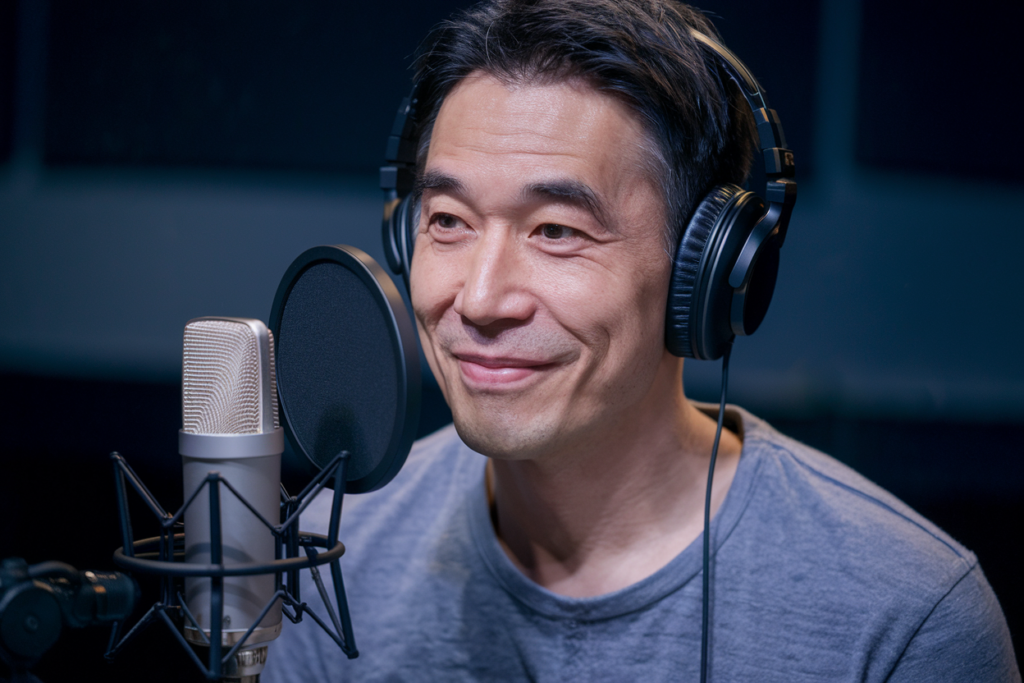Key Takeaways
- Historical Roots: The Japanese language originated as an oral communication system before adopting Chinese characters (kanji) in the 5th century, marking a significant turning point in its written form.
- Influence of Classical Chinese: The introduction of kanji through Buddhism and Confucianism enriched the Japanese vocabulary and allowed for complex ideas to be expressed, influencing governance, philosophy, and culture.
- Development of Phonetic Scripts: The emergence of hiragana and katakana during the Nara and Heian periods enabled better representation of native words and foreign terms, enhancing communication.
- Regional Dialects: Indigenous dialects contributed to the evolution of Japanese by reflecting local customs and traditions, laying a foundation for modern standard Japanese while preserving cultural heritage.
- Post-War Reforms: Educational reforms after World War II simplified kanji usage and standardized language guidelines, promoting accessibility and fostering national identity among citizens.
- Globalization Impact: Contemporary Japanese increasingly incorporates loanwords from English due to globalization, particularly in technology and pop culture contexts, showcasing its adaptability while maintaining its unique structure.
Have you ever wondered how the Japanese language transformed over centuries? The historical evolution of Japanese language is a fascinating journey that reflects cultural shifts, social changes, and interactions with other languages.
Overview of Japanese Language
The Japanese language evolved significantly over centuries, shaped by cultural exchanges and historical events. Its roots trace back to the ancient times when it was primarily an oral language. Early forms lacked a writing system, making communication reliant on spoken words.
With the introduction of Chinese characters in the 5th century, Japan adopted kanji, which greatly influenced its written form. This borrowing marked the beginning of a complex relationship between Japanese and Chinese languages. As time passed, two phonetic scripts emerged: hiragana and katakana. Hiragana became essential for native words and grammatical elements, while katakana was used for foreign terms.
Modern Japanese continues to reflect these influences through vocabulary expansion. The language now includes many loanwords from English and other languages, enriching its lexicon. The integration of modern technology also transformed communication styles among speakers.
Understanding this evolution provides insight into how Japanese functions today. It offers a glimpse into the culture that shaped it while highlighting the adaptability of language itself in responding to societal changes.
Early Influences on Japanese Language
The history of the Japanese language reveals a tapestry woven with diverse influences. Various cultural exchanges and interactions shaped its development, particularly during its formative years.
The Role of Classical Chinese
Classical Chinese profoundly influenced the Japanese language, especially from the 5th century onward. As Buddhism and Confucianism spread to Japan, so did Chinese characters, known as kanji. These characters became vital for writing and allowed for the expression of complex ideas. You can trace many native words back to this period when scholars adapted Chinese vocabulary into their own linguistic framework. This interaction not only enriched the lexicon but also introduced new concepts related to governance, philosophy, and culture.
Indigenous Japanese Dialects
Indigenous dialects play a crucial role in understanding early Japanese language evolution. Different regions developed unique speech patterns and vocabulary, reflecting local customs and traditions. For instance, dialects such as Kansai-ben or Tohoku-ben exhibit distinct phonetic features that showcase regional identity. These variations provided a foundation for modern standard Japanese while preserving valuable cultural heritage within communities throughout Japan.
This historical context illustrates how external influences and internal developments intertwined to shape what we recognize today as the Japanese language.
Development Through the Ages
The Japanese language has undergone significant transformations over centuries, reflecting cultural shifts and societal changes. Understanding its development reveals insights into Japan’s rich history and identity.
Nara and Heian Periods
During the Nara (710-794) and Heian (794-1185) periods, Japanese began adopting Chinese characters, known as kanji. This adoption marked a critical phase in literacy and communication. Written records emerged, enabling scholars to document poetry, historical events, and religious texts. The influence of Buddhism also played a role; it introduced new vocabulary associated with spirituality and philosophy. Hiragana developed as a phonetic script during this time, allowing for greater expression of native words alongside kanji.
Kamakura and Muromachi Periods
In the Kamakura (1185-1333) and Muromachi (1336-1573) periods, Japanese continued to evolve as regional dialects flourished. The emergence of samurai culture influenced language use in literature and governance. The introduction of katakana provided a way to transcribe foreign terms accurately, further enriching the lexicon. These developments reflected social hierarchy; different classes used distinct linguistic styles that mirrored their status within society.
Edo Period and Modernization
The Edo period (1603-1868) ushered in significant changes through increased urbanization and commerce. Standardized forms of Japanese began taking shape due to the growth of print media, making literature more accessible to wider audiences. As Western influences became prominent during modernization efforts in the late 19th century, loanwords from English entered everyday conversation, expanding vocabulary even further. Technological advancements transformed how people communicated—new words emerged to describe inventions like telephones or automobiles.
Each era contributed unique elements that shaped modern standard Japanese while highlighting its adaptability amid external influences. This evolution illustrates not only linguistic changes but also cultural exchanges that have enriched Japan’s narrative throughout history.
Contemporary Japanese Language
Contemporary Japanese reflects a dynamic blend of historical influences and modern developments. It integrates traditional elements with new concepts, making it a vibrant means of communication.
Post-War Reforms
Post-war reforms significantly impacted the Japanese language, particularly in education and literacy. The government implemented policies to simplify kanji usage, promoting easier reading and writing. This shift aimed to increase accessibility for all citizens, encouraging greater engagement with written materials. Furthermore, the establishment of standardized language guidelines helped unify regional dialects into what is now recognized as modern standard Japanese. These changes not only enhanced communication but also fostered a sense of national identity.
Globalization and Language Change
Globalization introduced diverse linguistic influences into contemporary Japanese. English terms increasingly permeate everyday conversation, especially in technology, business, and pop culture contexts. You might notice loanwords like “コンピュータ” (konpyūta) for computer or “インターネット” (intānetto) for internet being used widely among various age groups. Additionally, social media platforms contribute to evolving slang and expressions that resonate with younger generations. As cultural exchanges continue to expand through entertainment mediums such as anime and music, the language adapts by incorporating new vocabulary while retaining its unique structure and nuances.
This evolution showcases how contemporary Japanese thrives amid ongoing change while honoring its rich heritage.
Conclusion
The journey of the Japanese language is a testament to its resilience and adaptability. You’ve seen how it evolved from an oral tradition to a complex system influenced by various cultures and historical events.
Today, Japanese stands as a rich tapestry woven from indigenous dialects and foreign influences, reflecting both tradition and modernity. As you explore this dynamic language further, you’ll appreciate its ability to embrace change while staying rooted in its heritage.
This ongoing evolution invites you to witness how language shapes identity and culture, making the study of Japanese not just about words but about understanding a fascinating history that continues to unfold.
Frequently Asked Questions
What is the origin of the Japanese language?
The Japanese language originated from an oral tradition without a writing system. Its significant evolution began in the 5th century with the introduction of Chinese characters, which laid the groundwork for kanji and enriched the language with new vocabulary.
How did kanji influence Japanese writing?
Kanji, introduced during interactions with Chinese culture, became essential for writing in Japan. It allowed for more complex expressions and concepts related to governance, philosophy, and culture, greatly enhancing the Japanese lexicon.
What are hiragana and katakana?
Hiragana is a phonetic script that emerged during the Nara and Heian periods to complement kanji. Katakana was developed later, primarily used for transcribing foreign words and reflecting social hierarchy throughout various historical periods.
How did urbanization affect the Japanese language in Edo period?
Urbanization during the Edo period led to increased commerce and interaction among different regions. This resulted in the standardization of Japanese as diverse dialects merged into a more unified form of communication.
What role does English play in modern Japanese?
In recent years, English has significantly influenced modern Japanese through globalization. Many loanwords have been adopted into everyday conversation, particularly in technology, business, and pop culture contexts.
How has post-war reform impacted Japanese language education?
Post-war reforms simplified kanji usage and established standardized guidelines for teaching. These changes aimed to unify regional dialects into one cohesive standard form of modern Japanese while improving literacy rates across Japan.
Are indigenous dialects important to contemporary Japanese?
Yes! Indigenous dialects reflect unique regional customs and traditions that contribute to modern standard Japanese’s richness. They showcase how local influences continue to shape language despite broader national trends.
How does social media influence contemporary Japanese?
Social media plays a vital role in evolving contemporary Japanese by introducing new slang terms and expressions. This reflects ongoing linguistic change while preserving traditional aspects of the language amid rapid modernization.







